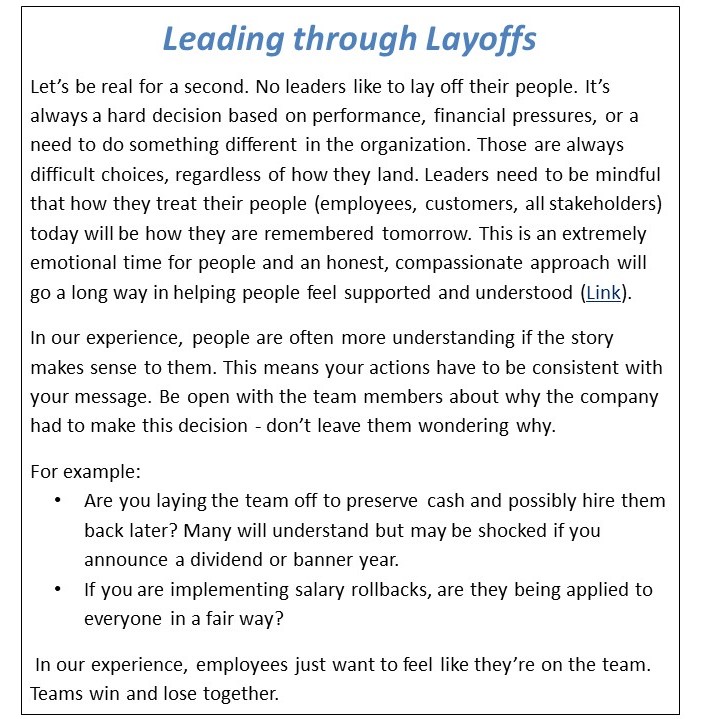Firefighting. Tactical. In the weeds. These are the words that many senior leaders use when reflecting on how they’re leading in the pandemic. The seismic shifts occurring in our society and economy have permeated into our Board rooms and personal lives. What’s more, change continues to occur at a rapid pace with Governments updating and modifying direction week to week, and the virus moving quicker than that. This has left many leaders feeling pulled down into their businesses, unable to get their heads above water to guide the ship.
This struggle has a lot to do with feelings of uncertainty about what the future will hold and wondering how they can best protect their business. This uncertainty puts leaders into a defensive mindset. A striking example of this is how leaders quickly jump to thinking about their organizational structure. In a defensive mindset, the organizational structure is viewed as a cost center and something that leaders can control, so during this pandemic leaders are making cuts and are often reviewing on a month-to-month basis to determine “do I need to do more?”
While a defensive mindset is understandable and necessary in the short-term, leaders should be wary of staying in a defensive mindset for too long. Teams that are not growing are dying. It’s time to go on offense.
The remainder of this post will talk about the difference between offensive plays and defensive plays at the structural level, why it’s important to consider both playbooks, and what steps you can take to build this thinking in to your day-to-day.
Defensive vs. Offensive Plays
Let’s be clear. When we’re talking about offensive plays, we’re not saying plays intended to be offensive to anyone (except maybe your competitors!). We’re using the sports analogy. Legendary NFL Head Coach Hank Stram referred to these plays in his infamous sound bite “just keep matriculating the ball down the field” (Link). These plays are simply identifying opportunities and plans that, if successfully executed, will help you win the game. You can use your own mental analogy, a basketball court, a soccer pitch, a Napoleonic battlefield, a chessboard… Your mental imagery may look something like this:
Your Virtual Battlefield
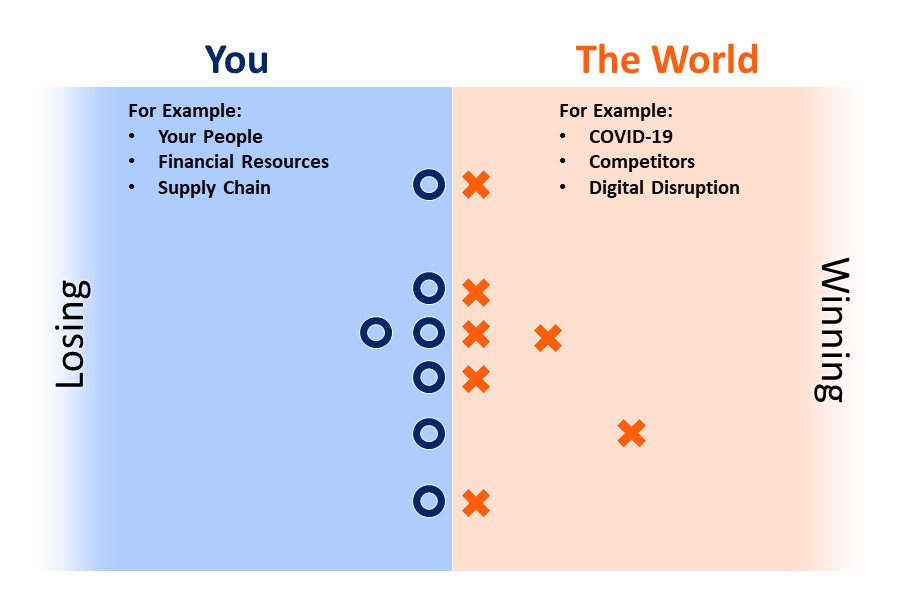
Defensive plays aim to avoid loss or reduce negative impact. They are often focused on survival, reacting to issues and challenges as they arise. When considering your organizational structure, there are many defensive plays. A couple of quick examples include:
- Temporary layoffs or furloughing employees
- Shared work or salary rollbacks to maintain jobs
- Cutting non-core functions
- Permanent staff reductions
I think it’s safe to assume that every leader is assessing and reassessing which defensive plays they need to implement as the pandemic continues to change the world at an accelerated pace. For most businesses, this is as much philosophical as it is pragmatic realism. Companies will continue to make staffing decisions based on their personal / business philosophies about their people, along with the strength of their balance sheet and cashflows. Each of these decisions, among everything else happening in the world is about preserving oxygen… living to fight another day… defensive moves.
Defensive Plays Focus on Survival
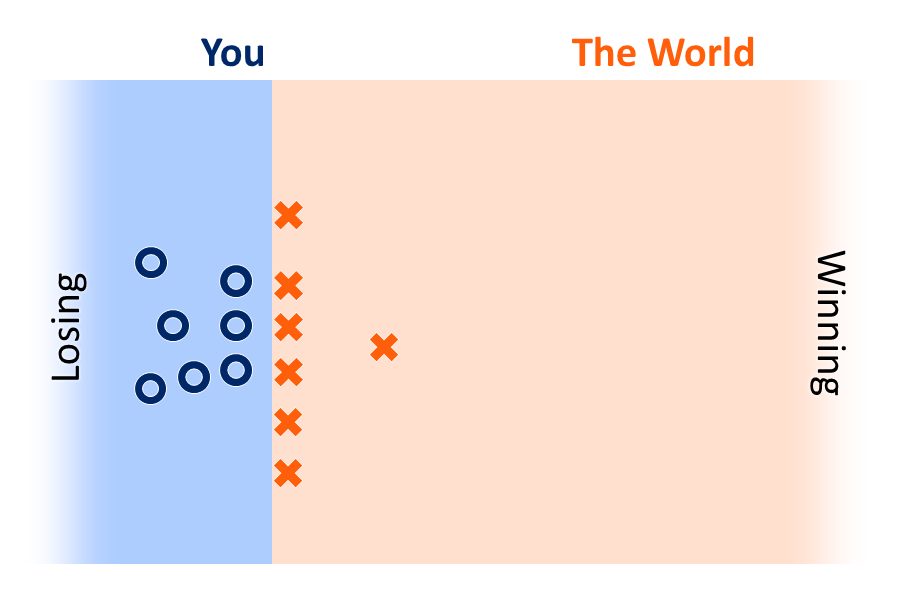
Offensive plays on the other hand, are proactive moves that get you closer to your goals, accomplish your objectives, and deliver improved results for your business. These moves should be based on your strategic goals and aspirations… the dreams that you have spoken about with your leadership team that you think about when you define what winning means to you. Examples of offensive moves you could make at the structural level include:
- Creating new functions to accomplish new objectives
- Growing teams to expand geographically or take market share
- Developing partnerships or associate programs to bring new capabilities to the table
- Hiring and holding hard-to-source talent when it is available
Offensive Plays Get You Closer to Your Goals
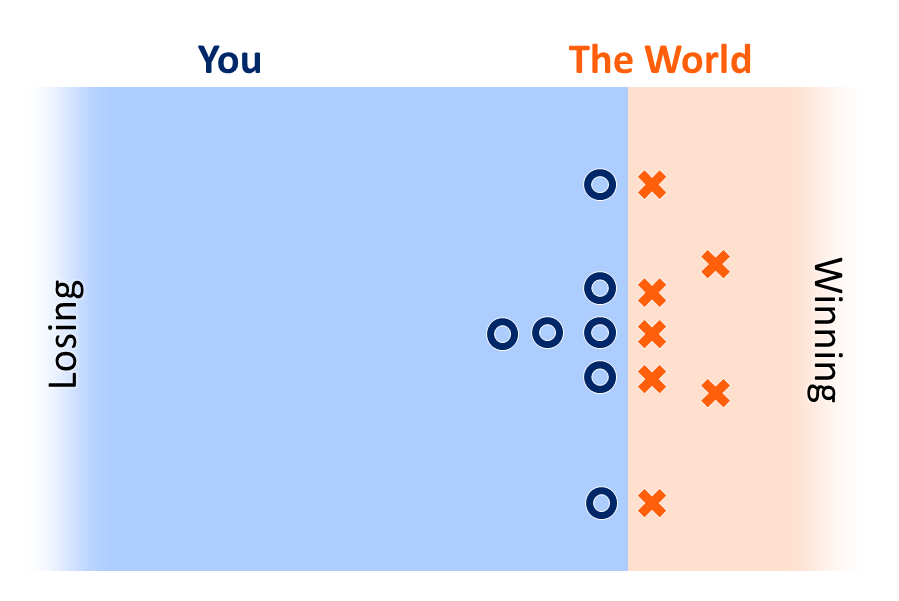
Ask yourself; are you thinking about offensive plays when considering your structure? If the answer is no, you’re not alone. With so much uncertainty out there, many leaders are still consumed with implementing defensive ones.
I’m not writing this article to suggest that defensive plays aren’t important. They are. They’re critical. In reality, you need both playbooks. It’s really hard to pull the trigger on an offensive play if you haven’t made an offensive game plan.
The Limitations of Only Using Defensive Plays
Defensive plays usually consist of the “tinkering” leaders do with their organizational structure. Adding offensive plays into how you look at your organizational structure will reframe how you approach your people and structure challenges. Let’s start by looking at how leaders manage their structures today.
Many leaders manage their structures using two instruments: Budget and Gut. Do I have budget for the resources and what does my intuition tell me I should do? When teams are underperforming, let’s shuffle in a new leader… maybe they’ll get more out of the team. A unique skillset left the organization, let’s go hunt unicorns looking for the perfect puzzle piece to fit the hole left on our team. At its worst, this ad hoc approach to organizational design can result in empire building and turf wars as leaders look to consolidate and amass power below them. In a best-case scenario, no leader can truly say that they know if they have the right knowledge, skills, and ability on their teams.
Leaders that are letting the market come to them risk missing it altogether.
The Case for Offensive Game Planning
An organization should be designed based on the capabilities and skillsets it needs to accomplish its strategy. Creating an inventory of all the capabilities required to operate the organization today and, in the future, provides a tremendous foundation for some offensive play calling. As disruption moves through industry after industry, organizations that are investing in tomorrow’s capabilities today will be in a better position to adjust their operating models, continue to wow their customers, and put themselves in a better position to flourish.
Why is offensive game planning important, especially in a pandemic?
Crisis creates opportunity.
Your customers’ needs may have changed. Your industry may be shaken up. Your competitors are having these conversations in their Board rooms. Reframe how you think about the pandemic. This can be the great reset of the board. Your opportunity to deliver tremendous value to your customers, take market share, and leave your competitors behind. As a leader, don’t you want your operating model and organizational structure working to support you in this?
Let’s look at a fictitious example.
The Context
Company A provides manufacturing equipment to its customers. It sells equipment and provides ongoing support after installation through both preventative and reactive maintenance programs for its customers. Company A’s main competitor, Company B, competes with them head-to-head for the same customers. When the pandemic hit, both companies spoke with their customers and learned that all preventative maintenance work was being pushed out to protect cash.
The Game Plans
Both companies implemented defensive plays to preserve cash. While Company B continued to look for opportunities to reduce spending and protect shareholder returns, Company A viewed this as an opportunity to implement some offensive plays. Company A had long wanted to have better visibility and predictability of failure rates of its equipment to avoid reactive, break-fail fixes, which are much more expensive and strain customer relationships. Company A used the pandemic as an opportunity to hire data analytics resources to perform a deep dive into the likelihood of break-fail scenarios for its equipment and to identify the warning signals that a failure could occur. It reallocated its product and engineering resources to support the assessment and engaged their sales and marketing teams to help quantify the benefits and impact for customers.
The Results
Coming out of the pandemic, Company A and Company B are going to have two very different conversations with their customers. While Company B is busy asking when its customers are going to build new plants or complete preventative maintenance, Company A will be talking to its customers (and Company B’s customers) about a new line of support services that will extend the life of existing equipment, increase uptime, and reduce the need for additional capital investment. Any guess who is going to pick up market share because they also considered making offensive moves in the pandemic?
Build your own Offensive Game Plan
So what can you do to start building your offensive game plan? We recommend sharing this article with your leadership team and booking time to have this conversation at your next team meeting. Set your whiteboard up like this:
Your Offensive Game Plan
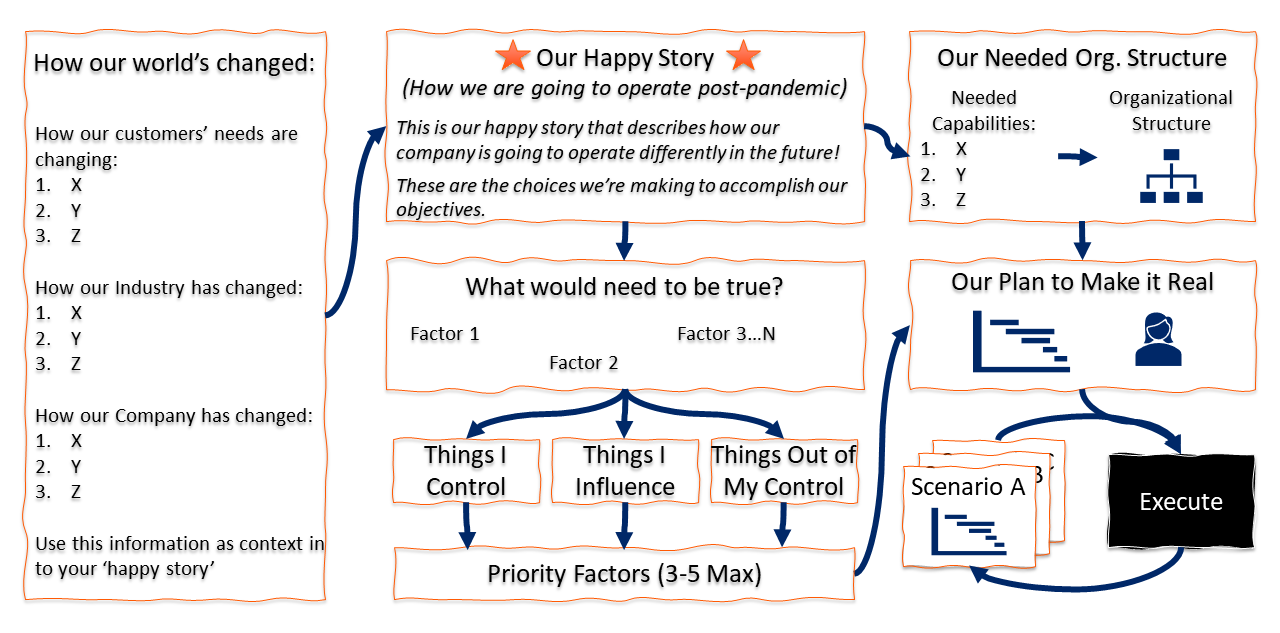
Here’s a list of questions to help guide your offensive game planning conversation and keep you focused on the outcomes you need:
- Discuss what’s changed in your industry and how that impacts your business
- Are customers going to be willing to buy again? When? Have their needs changed?
- If possible, you should include your customers in this conversation. Speculation is the quickest way to create misalignment between you and your customers. You need to get over any insecurity of appearing weak in front of them. They’ll appreciate being brought into your planning conversations.
- Has your supply chain been impacted? Do you need to rethink how you prepare your value proposition?
- What have your competitors done in response to the pandemic? What if you were to do the opposite? The same?
- Decide on how you want your operating model to evolve
- What opportunities are available from the changes occurring in your industry?
- What goals or aspirations do you have?
- Tell a happy story about how your organization is operating in the future – what’s different? What’s the same?
- Look at your story. What decisions have you made (or do you need to make) about how you will operate differently in the future?
- Ask yourself “what would need to be true to turn this story from make-believe to reality?”
- Write the answers down
- Separate the list into three categories:
- things you control (e.g. decisions you make)
- things you influence (e.g. when customers choose to buy); and,
- things you can’t control (e.g. how your competitors respond).
- Prioritize which answers have the highest impact on your success.
- Pick three to five of them. There’s a good chance they’re in the can’t control, or influence bucket.
- Put these aside for now
- Consider how your organizational structure needs to evolve to enable your story:
- What knowledge, skills, abilities, and capabilities do we need?
- Do we need to make any changes to how we are structured?
- Do we need new roles?
- Are our existing roles focused on the right metrics?
- Is there a better way to orient resources or allocate them to higher return activities to achieve our goals?
- Develop a plan for your happy story.
- Identify how you’re going to implement your organizational structure changes
- Reframe your control and influence lists as initiatives or actions.
- Prioritize and sequence your plan. Consider:
- Which actions / initiatives will have the most impact on your business?
- Which items are quick wins?
- Which items are cheap or free?
- Which items are risky? Not risky?
- Bring back your top 3-5 factors or assumptions in your happy story. What happens if they’re untrue?
- Describe the 3-5 scenarios / deviations from your happy story
- Determine how your initiatives and action plan changes based on each scenario
- Do any initiatives or actions get cancelled in certain scenarios?
- Do you speed up, or slow down, any initiatives or actions in various scenarios?
- Do certain decisions turn from no, to yes, in certain scenarios?
- Which scenario is most likely? Least likely?
- Begin implementing with your team and monitor your assumptions to understand if you’re triggering into a new scenario.
- Lead the execution of the desired objective and discuss in the Board room if the objectives need to change.
You’ll know the level of rigor that you’ll need to apply to your planning efforts. Remember the value lies in the planning activity, not the plan you produce. This activity will help get your team aligned and thinking proactively about opportunities for your business and teams.
If you’re looking for guidance on how you can implement more defensive moves, check out our post on how to cut when you can’t cut any more (Link)
In Closing
The pandemic has forced many leaders to focus inwardly on their organizational structures, assessing the defensive plays they can execute to stay afloat. Working through the offensive plays with your leadership team can help everyone be prepared to pull the trigger and make the right decisions to enable your desired operating model. Failing to do so may result in missed opportunities or customer churn as your customers flock to the businesses that are better adapting to their evolving needs.

